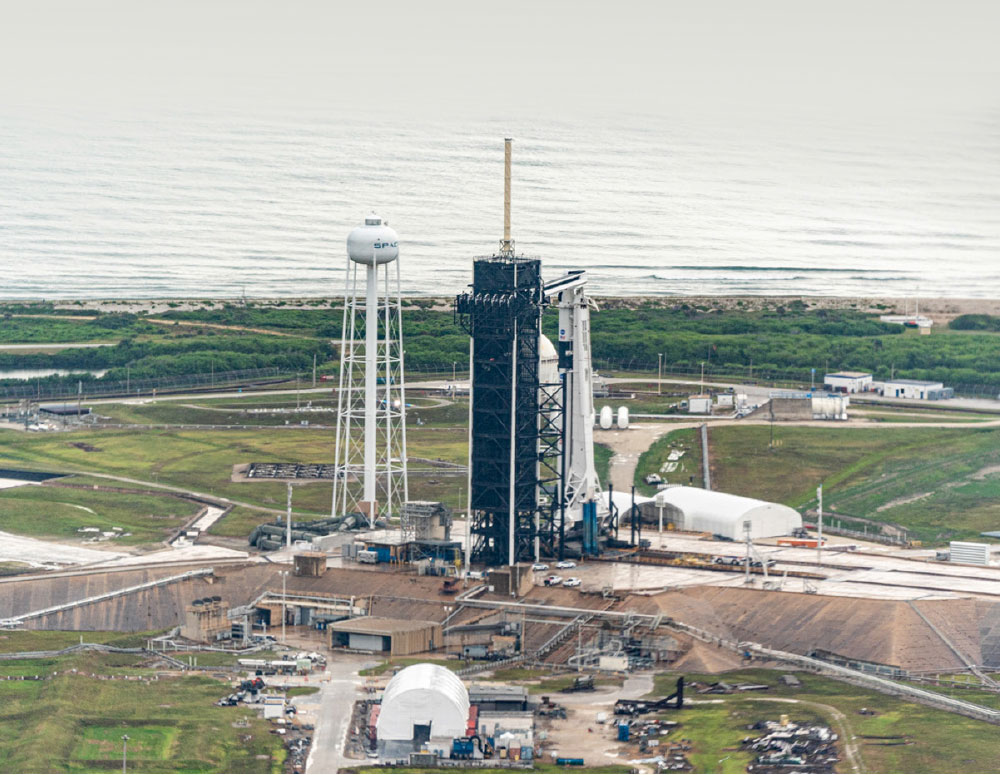


Launch Complex 39A (LC-39A) was initially built for the Apollo/Saturn V rockets that launched American astronauts on their historic journeys to the Moon and back. Since the late 1960s, Pads A and B at Kennedy Space Center`s Launch Complex 39 have served as backdrops for America`s most significant human spaceflight endeavors—Apollo, Skylab, Apollo-Soyuz, and the space shuttle.
In 2014, Space Exploration Services, or SpaceX, signed a property agreement with NASA for use and operation of LC-39A for 20 years, part of Kennedy Space Center`s transition to a multiuser spaceport. SpaceX modified LC-39A to adapt it to the needs of the company`s Falcon 9 and Falcon Heavy rockets. SpaceX constructed a Horizontal Integration Facility near the pad`s perimeter where rockets are processed for launch prior to rollout to the pad for liftoff. The Transporter Erector (TE) is used to move the Crew Dragon spacecraft to the top of the Falcon 9 rocket on the launchpad. Standing 212 feet high—more than 20 stories—the TE moves launch-ready rockets and spacecraft from the processing hangar at the base of the pad up to the pad surface and into a vertical position over the flame trench. The TE is a much larger and stronger version of the erector the company uses at Space Launch Complex 40 and is used to process and launch Falcon Heavy rockets.
The first SpaceX launch from LC-39A was SpaceX`s 10th Commercial Resupply Services mission to the International Space Station, known as CRS-10. The launch on Falcon 9 took place on February 19, 2017 and carried supplies and research to the space station. Since then, CRS-11 and CRS-12 have also launched from LC-39A. SpaceX will use LC-39A for its Crew Dragon missions to the International Space Station.